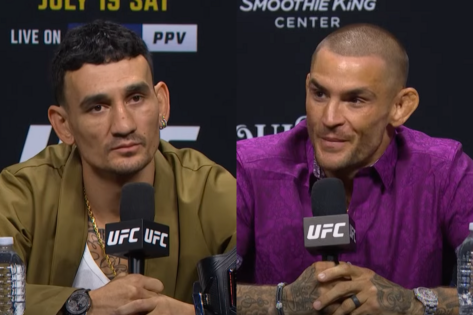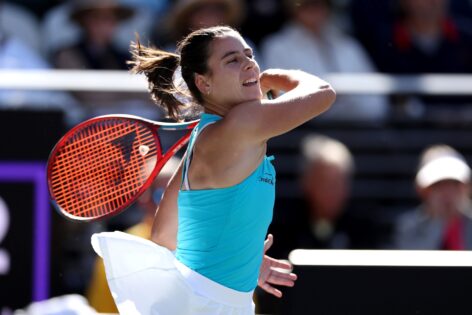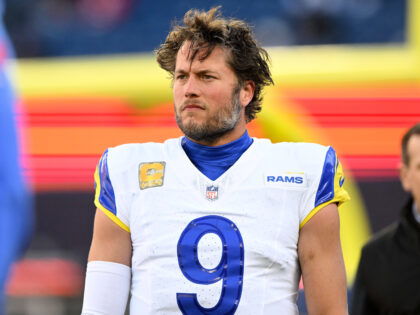The WNBA’s courtside is packed with stars—Kevin Durant at a Sky game, Ali Wong cheering on the Valkyries. The league’s red carpet might be off the court, but on the court, it’s the selective VIP treatment that’s got Liberty guard Sabrina Ionescu fired up. “Freedom of movement is different…” she said bluntly—not about logistics, but whistles.
And Ionescu’s not the only one seeing it. In fact, just about every fan of every team sees the same thing. Watch a Sky game, and it feels like Chi-town never gets a fair whistle. It’s the same with the Mystics, the Fever, the Dream—you’d be hard-pressed to find a single game where the officiating felt truly consistent.
Want an example? Look no further than Paige Bueckers. In her debut against Minnesota, she leapt to contest Napheesa Collier, adjusted mid-air to avoid contact—and still got called.
No body, no foul? Not in the W. Ionescu broke it down with Sue Bird on A Touch More:
“When you watch NBA or men’s college, star players get any call. You can touch them with a fingernail, they’re going to the free throw line. In the W, they don’t care—there are no handcheck calls—freedom of movement is different…”
And while the implication might be that the WNBA doesn’t tolerate physicality, the reality tells a different story—one riddled with inconsistency.
sabrina ionescu on officiating in the wnba:
“when you watch nba or men’s college, star players get any call. you can touch them with a fingernail, they’re going to the free throw line. in the W, they don’t care—there are no handcheck calls—freedom of movement is different…” pic.twitter.com/qGEXRDrC6V
— cc akgae (@clrkszn) May 26, 2025
In a recent preseason game, between the Fever and the Mystics, Brittney Sykes and rookie Kiki Iriafen were both seen pushing Sophie Cunningham. In that same stretch, Kelsey Mitchell was pushed to the floor, part of what analyst Rachel DeMita described as her being “pushed around a lot.” DeMita also noted that Mystics head coach Eric Thibault and Connecticut Sun head coach Stephanie White were both visibly frustrated and vocal with the referees over the same issue.
On her podcast The Courtside Club, DeMita took the league to task:
“I don’t think that the WNBA should continue to lean on the fact that they’re a physical league and make that the selling point of the league… A lot of people are saying like, ‘Oh, I love it. It’s back to the nineties style of basketball when there were so many fights…’ No, it’s actually not good basketball. It’s not fun basketball to watch.”
She added:
“I call BS when they say that they’re working to make sure that the offense can play offense. That’s not true. We’ve seen what the NBA has done—they’ve actually made sure that the offense can run smoothly. The thing with the WNBA is, it is physical to a fault. And their ability to be physical legally is very different.”
This inconsistency stands in stark contrast to how fouls are treated in the NBA, where offensive players benefit significantly from foul calls. For example, during the 2025 playoffs, Shai Gilgeous-Alexander scored 442 points—122 of which came from free throws. That’s 27% of his total points, off 143 attempts. Jalen Brunson, another player known for foul-baiting, had 103 of his 448 playoff points from the line, attempting 123 free throws.
They’ve mastered the art of drawing fouls. In contrast, the WNBA are bouncing between whistles trying to decide if the game should be more physical or less physical.
The issue isn’t just isolated calls—it’s a league-wide problem of inconsistency that affects the flow of the game, the safety of players, and the perception of professionalism.
Clark, Ionescu, and the Case of Uneven Whistles
And the irony in all this—before we even compare officiating in the W—is that some players in the league don’t even get the same fair calls as others.
Just ask Caitlin Clark. In a recent pivotal Fever–Liberty matchup , with 2.9 seconds left in a 90-88 game, Natasha Cloud made hard contact. No foul. Clark looked stunned, pleading her case. The referee? Tyler Ricks—the same official who gave her a technical for hitting the stanchion after missing a three in 2024.
Although Clark brushed it off at the time—“I got a technical for basically being mad at myself because I missed a three,” she recalled after a 2024 win over Seattle. “And then I went and hit the backboard, and he told me it was disrespectful to the game of basketball”—the moment now reads like a case study in officiating double standards.
Oct 10, 2024; Brooklyn, New York, USA; New York Liberty guard Sabrina Ionescu (20) at Barclays Center. Mandatory Credit: Wendell Cruz-Imagn Images
Just days later, in September 2024, Diana Taurasi did the exact same thing against Chicago—slammed the stanchion in frustration—and got away with it. And that’s not a minor gripe—it’s the core of Ionescu’s complaint: the best players in the league aren’t getting the same treatment.
While DeMita went on in her podcast to break down the intricacies behind WNBA referees and calls, what’s more pressing right now is the bigger picture: the calls have been wildly inconsistent. And maybe that inconsistency starts well before the whistle ever blows.
It raises questions about how referees are selected in the first place. Could the selection committee be doing more? Should there be better scouting and testing before refs take the floor? Whatever the reason, one thing is clear—being a WNBA referee isn’t a particularly lucrative job. Salaries range from $35,000 to $50,000 for an entire season.
And that kind of pay disparity matters. In the NBA, referees make between $3,000 and $7,000 per game and can earn between $180,000 and $550,000 annually. The investment gap is massive—and it might just be showing up on the court.
The post Sabrina Ionescu’s WNBA Officiating Frustration Echoed in 12-Minute Dissection by National Analyst appeared first on EssentiallySports.



